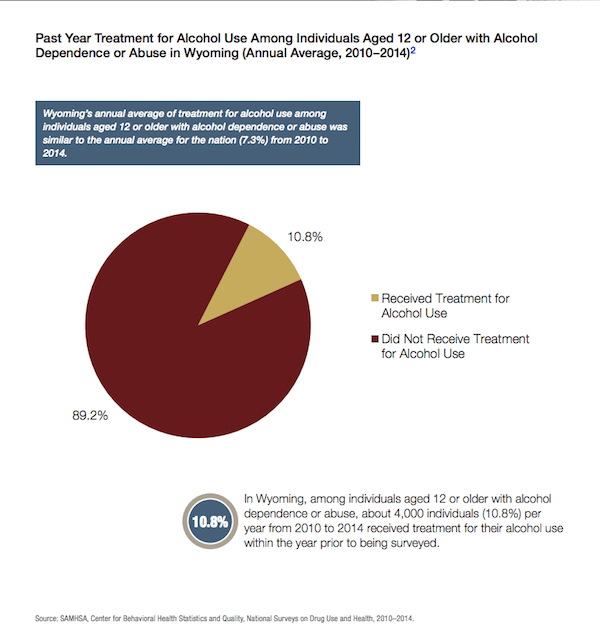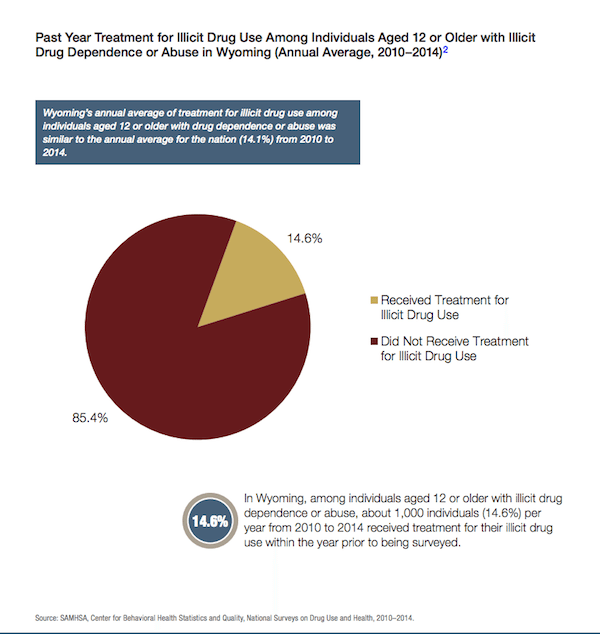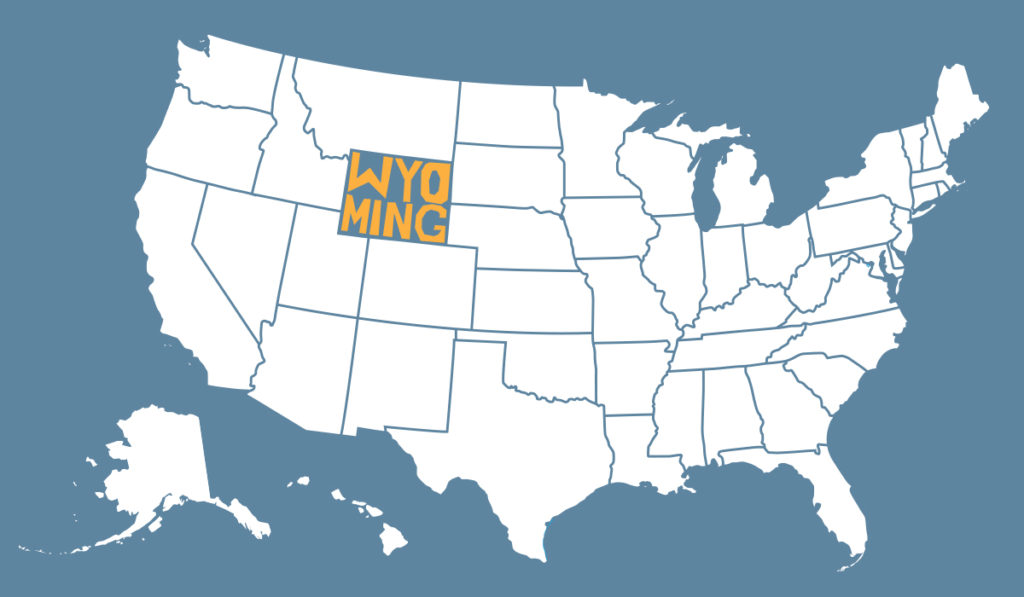STATE OF AFFAIRS: Grant Brings Medication Assisted Treatment to Wyoming
State Admissions into Treatment for Heroin Rise to 132 in 2015
CHEYENNE, Wyoming (June 2, 2016) – A new grant will help expand Wyoming’s “Medication Assisted Treatment” program in an effort to combat the rising heroin epidemic in the state. The Substance Abuse and Mental Health Services Administration is giving the state $1 million in a targeted effort. According to the Wyoming Department of Health, admissions into treatment for heroin have increased from 58 in 2011 to 132 for 2015, and even more are expected this year. SAMHSA identified Wyoming as one of several states with recent increases in heroin use. Opiates and other synthetic drug use treatment admissions increased from 262 in 2011 to 345 last year. “Both heroin and opiate treatment admissions are unfortunately continuing an upward trend in the current fiscal year,” says Quality Management and Outcomes Unit and MAT Grant Program Manager with the WHD Behavioral Health Division Margarete Loghry. “Medication assisted treatment is an evidence-based practice that has been shown to be effective in helping people to achieve sustained recovery from opiate addiction.” Medication assisted treatment uses opioid antagonist medication therapies together with standard therapy and substance use treatment. These medications help to bind the brain’s opiate receptors so that opioids including heroin are blocked from creating a high in users while also helping to prevent withdrawal symptoms.  Pilot programs in Casper and Rock Springs will be collecting and reporting data as a result of the grant. “If we see the positive outcomes for consumers we expect from these efforts, future expansion of MAT programs within in the state is something we will work toward,” says Loghry. “We believe MAT can be very helpful for people who are seeking treatment so they may take steps toward living healthy, addiction-free lifestyles and also to maintain their recovery.” Opioids aren’t Wyoming’s only addiction concern. Each year in Wyoming, 210 deaths and 6,480 years of potential life are lost due to the harms resulting from excessive alcohol use. 17.2% of adults in the state reported binge drinking in 2014 and 21.4% of high school students reported binge drinking in 2013. The harms related to excessive alcohol use are also costly. Reduced workplace productivity, law enforcement and other criminal justice expenses, the cost of treating people for health problems caused by excessive drinking and costs attributable to motor vehicle crashes cost Wyoming an average of $593.1 million annually, or $2.33 per drink.
Pilot programs in Casper and Rock Springs will be collecting and reporting data as a result of the grant. “If we see the positive outcomes for consumers we expect from these efforts, future expansion of MAT programs within in the state is something we will work toward,” says Loghry. “We believe MAT can be very helpful for people who are seeking treatment so they may take steps toward living healthy, addiction-free lifestyles and also to maintain their recovery.” Opioids aren’t Wyoming’s only addiction concern. Each year in Wyoming, 210 deaths and 6,480 years of potential life are lost due to the harms resulting from excessive alcohol use. 17.2% of adults in the state reported binge drinking in 2014 and 21.4% of high school students reported binge drinking in 2013. The harms related to excessive alcohol use are also costly. Reduced workplace productivity, law enforcement and other criminal justice expenses, the cost of treating people for health problems caused by excessive drinking and costs attributable to motor vehicle crashes cost Wyoming an average of $593.1 million annually, or $2.33 per drink.  And while 132 people admitted for treatment involving heroin doesn’t sound like a lot, keep in mind that it’s only about 11% of the population who actually needs treatment and just isn’t getting it. Wyoming’s drug overdose death rate is 17.2 per 100,000 people, which actually exceeds the national rate of 13.8 per 100,000 people. 46 states enacted some form of change to their sentencing laws this year, and Wyoming was no exception. There were 201 changes to state level criminal justice laws in the past 2 years. In 2015, state lawmakers expanded eligibility for deferred prosecution for first-time drug offenders and automatically restored voting rights for nonviolent felony offenders. In 2014, the state required websites that publish arrest photographs to remove the mugshots upon written request if the person was not convicted. While these steps helped Wyoming get people help and re-enter them into the community, it did not significantly reduce the prison population. Rep. James Byrd (D-Cheyenne) sponsored a bill that would ban employers from asking about an applicant’s criminal history on employment applications, which failed. Another bill would have made first-time felons eligible for parole for nonviolent crimes more eligible for parole, which also failed.
And while 132 people admitted for treatment involving heroin doesn’t sound like a lot, keep in mind that it’s only about 11% of the population who actually needs treatment and just isn’t getting it. Wyoming’s drug overdose death rate is 17.2 per 100,000 people, which actually exceeds the national rate of 13.8 per 100,000 people. 46 states enacted some form of change to their sentencing laws this year, and Wyoming was no exception. There were 201 changes to state level criminal justice laws in the past 2 years. In 2015, state lawmakers expanded eligibility for deferred prosecution for first-time drug offenders and automatically restored voting rights for nonviolent felony offenders. In 2014, the state required websites that publish arrest photographs to remove the mugshots upon written request if the person was not convicted. While these steps helped Wyoming get people help and re-enter them into the community, it did not significantly reduce the prison population. Rep. James Byrd (D-Cheyenne) sponsored a bill that would ban employers from asking about an applicant’s criminal history on employment applications, which failed. Another bill would have made first-time felons eligible for parole for nonviolent crimes more eligible for parole, which also failed.


